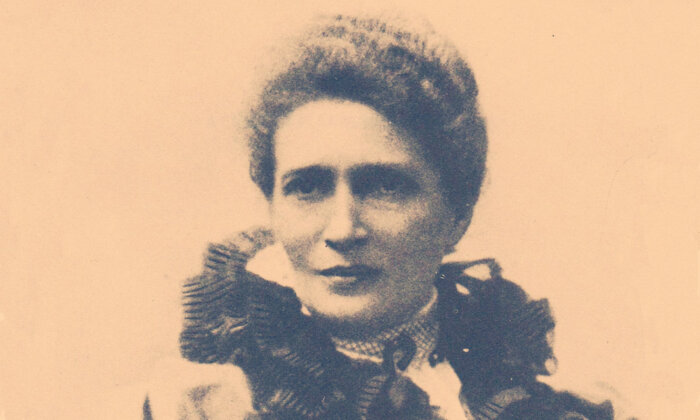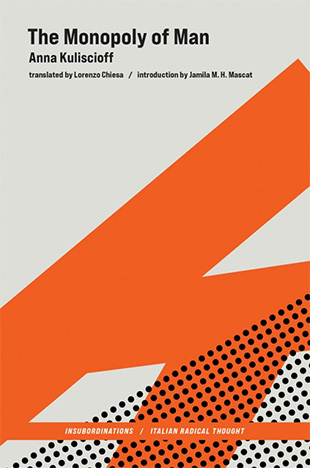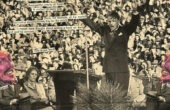A Socialist Feminist: Anna Kuliscioff and the Woman Question

A libertarian opponent of marriage (which she considered to be one of the “two currently predominant forms of the servitude of women,” the other being prostitution), the mother of Andrea Costa’s natural daughter, and the companion of Filippo Turati in a free relationship that lasted more than three decades, Anna Kuliscioff conducted her life in defiance of the dominant morals of her age. Her feminist stance on equality between the sexes resonated with her own experience as an emancipated and educated woman who finally gained entry into male-dominated territories like medicine and politics, just as her claims in defense of women workers reflected her socialist commitment to the class struggle.

The nihilist movement that emerged in the late 1850s right after the defeat of the Russian Empire in the Crimean war influenced Kuliscioff’s early formation and shaped her rebellious attitude against privilege and prejudice. As she recalls in her unpublished 1880 essay “Nihilism,” “The [Russian] youth, looking at the punishments [inflicted by the nobles on the peasants], felt an instinctive hatred against everything that incarnated despotism and its consequence, the omnipresence of slavery.” Family, traditional morality, and education were considered the most blatant incarnations of the tyranny of the tsarist regime.
This is why, in her words, “the first steps toward emancipation began at home, where young daughters tried to liberate themselves from paternal despotism, and young women from their husbands’. In other words, visions of new relationships within the family emerged everywhere.” As Kuliscioff remarks, the revolts initiated in the household did not simply target socially established “ideas, feelings and habits,” but also their “outward manifestations,” such as, in the case of women, “the pettiness of feminine vanity”: “So as to avoid having to deal with their appearance, women cut their hair, wore short dresses, and took on a rather masculine look; wanting to get rid of their absurd school education, young people conceived of free thinking in the widest sense, and even denied any intellectual authority outside their own reason and inquisitiveness.”
“The first steps toward emancipation began at home, where young daughters tried to liberate themselves from paternal despotism, and young women from their husbands’.”
Besides the early libertarian imprint of nihilism, the later immersion into anarchist and socialist milieus nurtured Kuliscioff’s political consciousness and brought her to associate the “woman question” with the “social question.” Socialist convictions shaped and oriented Kuliscioff’s feminist views, and rapidly distanced her from the liberal feminist circles that she encountered in Milan, in particular the Lega promotrice degli interessi femminili (League for the Promotion of the Interests of Women) founded in 1879 by outspoken feminist journalist Anna Maria Mozzoni, the translator of John Stuart Mill’s “On the Subjection of Women” and a key figure of Italian suffragism. In spite of Mozzoni’s rapprochement with the socialists during the 1880s and her participation in the Lega Socialista Milanese (Milanese Socialist League) founded in 1889 by Turati and Kuliscioff, the polemical duel between the two feminists, sparked by Kuliscioff’s proposal of a labor legislation for the protection of women and children in the late 1890s, mirrored the divergences between the two main orientations of Italian feminism at the time: on the one hand, a majoritarian independent feminist stance that focused on the defense of women’s rights (and especially women’s right to vote), considering “women” as a universal subject beyond class divides; and, on the other hand, Kuliscioff’s isolated “socialist feminism” that viewed the oppression of women through the lens of class interests and class struggle, foregrounding the combat of the “feminine proletariat.”
However, it would be unfair to reduce Kuliscioff’s feminism to a — so to speak — monistic class inclination. In fact, Kuliscioff always provided a twofold understanding of the woman question, and consistently developed a twofold strategy for women’s liberation within the workers’ movement and against its patriarchal structures. In Kuliscioff’s view, since woman “is not only a slave to the capitalist, but also a slave to her man,” women’s battle is doubled: on the one hand, women have to fight alongside men against capitalism; on the other hand, they have “an immediate struggle to sustain which is different from the one fought by men” and addresses them as a target.
Being strongly persuaded that “an economically dependent woman will always have a master” and never be free, Kuliscioff set as a cornerstone of her feminist vision the necessity for women to achieve economic emancipation from their male partners and their families as a premise for liberation. The emancipation of woman, therefore, primarily consists in her becoming “an autonomous person who has a right to work and to live working,” and labor thus constitutes a fundamental ground of feminist struggles — most importantly, one that also reveals the exploitative relationships at play even among women. In this respect, Kuliscioff opposed “the confused conception that considered the women’s movement as a matter of sex, as an indistinct mass.” Accordingly, she rejected the universalistic discourses of bourgeois feminists and their elitist defense of the interests of upper-class, privileged representatives of womanhood. As she remarked, if “for bourgeois women, men and exploiters are synonymous, for working class women, the exploiter can also be a woman.” Kuliscioff thus deemed “sentimental and utopian” a feminist struggle that ignored social divisions and concealed the conflicting interests of women opposed to one another across class divisions.
In fact, her strategy resulted from the “double consciousness” of the oppression of women by patriarchy and the exploitation of women at work by both male and female capitalists. Contrasting the intolerable living conditions of proletarian women with the ease and comfort enjoyed by women of the upper classes, Kuliscioff claimed that the socialist and feminist causes should not be conflated. No doubt, liberal and socialist women may share common goals; yet while “socialism and the emancipation of women are connected issues that permeate each other, and the triumph of the former cannot be separated from the latter,” she maintains that socialism and feminism can only be “parallel social currents” that “will never make one cause.”
Speaking anachronistically, one could say that Kuliscioff’s approach is based on a “unitary theory” that understands capitalism and patriarchy as intrinsically interlocked rather than viewing them as two autonomous systems. However, in practice, Kuliscioff’s “unitary theory” translates into a dual strategy of militancy premised on the fact that the complicit unity of the structures of patriarchal oppression and capitalist exploitation does not simplify resistance but rather increases the complexities of its multiple fronts.
Both at home and at work, gender inequality affects all women, from the lawyer to the rice-weeder (an emblematic figure of the rural feminine proletariat of Northern Italy). Yet, despite sharing a common condition of discrimination, women at different levels of the social scale experience sex disparity with varying severity. Similarly, freedom does not mean the same thing for proletarian and bourgeois women, although moral and social restrictions rigorously apply to both. The workload of domestic labor weighs on the shoulders of poor women workers much more heavily than it does on the shoulders of their wealthy employers. In other words, if the woman question cannot be unilaterally reduced to the proletarian women question, so the interests of privileged women cannot be identified with the interests of all women as such.
Amidst this web of asymmetrical and conflicting relations, Kuliscioff chose to invest her feminist engagement in the class-based organization of women as a semiautonomous force within the workers’ movement. With this aim, she exhorted women workers to unite and fight in their workplaces. In her 1898 appeal to workers in the tobacco manufacturing industry, Kuliscioff passionately advocated solidarity among women as the only means for the weak to defend themselves, and strike as the only weapon by which they can scare the capitalists. “You are not weaker because you lack force or intelligence,” she reminded them; “rather, you are weaker because you lack the weapons for attack and defense.” Similarly, addressing the seamstresses of Corso Magenta, Kuliscioff stressed that when women unite, they “become stronger than their bosses.”
In her 1898 appeal to workers in the tobacco manufacturing industry, Kuliscioff passionately advocated solidarity among women as the only means for the weak to defend themselves.
As a feminist socialist, Kuliscioff constantly invested her energies in facilitating a convergence of feminist struggles with socialist goals. In this respect, for the purpose of strengthening the presence of women within socialist ranks, she contributed to the creation of the Labor Organization of Socialist Women and encouraged women workers to unionize and join the Chambers of Labor (Camere del Lavoro), while working to raise awareness among both proletarian and peasant women of their own power and the need to struggle for better working and living conditions. At the same time, Kuliscioff fought to gain support for the women’s cause from her fellow socialist comrades and to integrate classical feminist claims for juridical equality and universal suffrage in the socialist agenda, harking back to the 1891 Erfurt Programme of the German SPD (Social Democratic Party). For Kuliscioff, indeed, the defense of women’s rights must be part and parcel of the socialist program: since women represent a huge (and growing) portion of the working class, their condition should matter significantly to the socialists.
Kuliscioff’s dual feminist struggle, against bourgeois feminists in the name of women’s labor rights, and within the Italian Socialist Party against the widespread sexist reflexes of its members, in the name of sex equality and universal suffrage, triggered recurrent polemics and remained controversial: on the one hand, feminist circles criticized her strong commitment to the socialist cause, on the other, fellow socialists often remained skeptical about her arguments against the discrimination of women.
After her death, Kuliscioff’s legacy was hagiographically appropriated by the Italian Socialist Party or fully inscribed by interpreters in the history of the PSI. The limited fortune of her feminist thought and practice, however, testifies to the scarce interest shown to her contribution to the history of 20th-century feminism by later generations of Italian feminists, who have tended to view her all-encompassing socialist commitment as ultimately detrimental to her feminist engagement. Undoubtedly, Kuliscioff identified socialism as the main horizon of women’s emancipation, and placed class struggle in a crucial position within the woman question. However, for her, socialism was not merely an economic solution to the evils of the world, but a “moral solution” that would transform humanity into the “consortium of the free and equal.” Woman “belongs to socialism” as “a worker, as a mother, as a woman”: thus women cannot desert the socialist fight, since if half of the army is missing, the war is most likely to be lost. Hence her vigorous appeal for women to join the Party: “Oh comrades, you outcasts, you forgotten, eternal victims, rise up! Oh slaves, be citizens! Oh females, learn to be women!”
Jamila M.H. Mascat is a post-doctoral researcher at the Department “Normes, Société, Philosophie” (NoSoPhi) of the University Paris 1 – Sorbonne. This article is excerpted from Mascat’s introduction to Anna Kuliscioff’s “The Monopoly of Man.”



